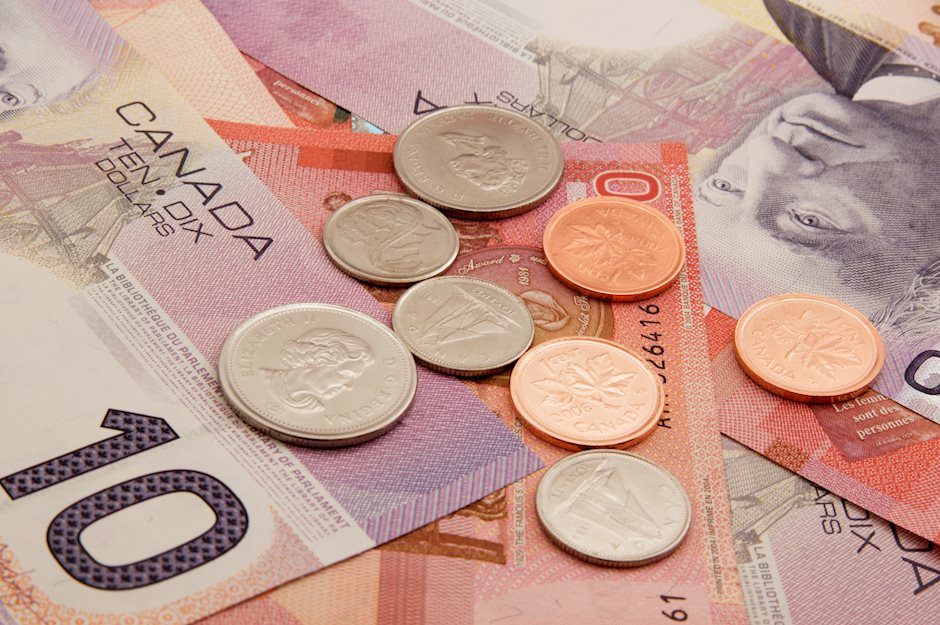USD/CAD eyes 1.3800 mark amid bullish USD, weaker Crude Oil prices
- USD/CAD scales higher for the ninth straight day and climbs to over a two-month top on Monday.
- Sliding Oil prices undermine the Loonie and lend some support to the pair amid a bullish USD.
- Reduced bets for a larger BoC rate cut to act as a tailwind for the CAD and cap gains for the pair.

The USD/CAD pair prolongs its uptrend for the ninth straight day and climbs to the 1.3785-1.3790 area, or its highest level since August 7 during the Asian session on Monday. The momentum is sponsored by a bullish US Dollar (USD) and declining Crude Oil prices, which tend to undermine the commodity-linked Loonie.
The USD Index (DXY), which tracks the Greenback against a basket of currencies, flirts with a nearly two-month top touched last Thursday amid firming expectations for a less aggressive policy easing by the Federal Reserve (Fed). In fact, the markets are now pricing in over a 90% chance that the US central bank will lower borrowing costs by only 25 basis points (bps) in November. This keeps the US Treasury bond yields elevated and continues to boost the Greenback, which, in turn, is seen acting as a tailwind for the USD/CAD pair.
Meanwhile, Crude Oil prices open with a bearish weekly gap in reaction to softer Chinese inflation data released over the weekend, which pointed to a sustained deflationary trend and bods poorly with fuel demand. Furthermore, the disappointment over China's fiscal stimulus plans, to a larger extent, overshadows Friday's upbeat Canadian jobs data, which forced investors to pare bets for a larger rate cut by the Bank of Canada (BoC). This is seen weighing on the Canadian Dollar (CAD) and offering support to the USD/CAD pair.
It, however, remains to be seen if bulls can capitalize on the move or opt to take some profits off the table ahead of the Canadian consumer inflation figures, due for release on Tuesday. In the meantime, the risk of a further escalation of geopolitical tensions in the Middle East and concerns about supply disruptions from the key producing region should limit losses for Crude Oil prices. This, in turn, might hold back the CAD bears from placing fresh bets and cap the USD/CAD pair amid thin liquidity on the back of a holiday in the US and Canada.
Canadian Dollar FAQs
The key factors driving the Canadian Dollar (CAD) are the level of interest rates set by the Bank of Canada (BoC), the price of Oil, Canada’s largest export, the health of its economy, inflation and the Trade Balance, which is the difference between the value of Canada’s exports versus its imports. Other factors include market sentiment – whether investors are taking on more risky assets (risk-on) or seeking safe-havens (risk-off) – with risk-on being CAD-positive. As its largest trading partner, the health of the US economy is also a key factor influencing the Canadian Dollar.
The Bank of Canada (BoC) has a significant influence on the Canadian Dollar by setting the level of interest rates that banks can lend to one another. This influences the level of interest rates for everyone. The main goal of the BoC is to maintain inflation at 1-3% by adjusting interest rates up or down. Relatively higher interest rates tend to be positive for the CAD. The Bank of Canada can also use quantitative easing and tightening to influence credit conditions, with the former CAD-negative and the latter CAD-positive.
The price of Oil is a key factor impacting the value of the Canadian Dollar. Petroleum is Canada’s biggest export, so Oil price tends to have an immediate impact on the CAD value. Generally, if Oil price rises CAD also goes up, as aggregate demand for the currency increases. The opposite is the case if the price of Oil falls. Higher Oil prices also tend to result in a greater likelihood of a positive Trade Balance, which is also supportive of the CAD.
While inflation had always traditionally been thought of as a negative factor for a currency since it lowers the value of money, the opposite has actually been the case in modern times with the relaxation of cross-border capital controls. Higher inflation tends to lead central banks to put up interest rates which attracts more capital inflows from global investors seeking a lucrative place to keep their money. This increases demand for the local currency, which in Canada’s case is the Canadian Dollar.
Macroeconomic data releases gauge the health of the economy and can have an impact on the Canadian Dollar. Indicators such as GDP, Manufacturing and Services PMIs, employment, and consumer sentiment surveys can all influence the direction of the CAD. A strong economy is good for the Canadian Dollar. Not only does it attract more foreign investment but it may encourage the Bank of Canada to put up interest rates, leading to a stronger currency. If economic data is weak, however, the CAD is likely to fall.
Author

Haresh Menghani
FXStreet
Haresh Menghani is a detail-oriented professional with 10+ years of extensive experience in analysing the global financial markets.

















